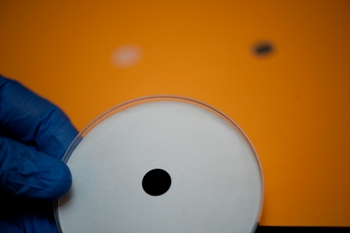Rice University research team led by Pulickel Ajayan has developed a lithium ion battery in a single nanowire, which could be used as a rechargeable power source for future-generation nanoelectronics.
 An ultrathin battery/supercapacitor hybrid contains thousands of nanowires, each of which is a fully functional battery
An ultrathin battery/supercapacitor hybrid contains thousands of nanowires, each of which is a fully functional battery
The research paper was reported in Nano Letters, a journal of the American Chemical Society. The paper describes two models of battery/supercapacitor hybrid being tested by scientists. The first system comprises polyaniline cathode layers, polyethylene oxide (PEO) electrolyte and nickel/tin anode. The system would allow lithium ions to effectively pass via the anode to the electrolyte and finally to the cathode that behaves as a supercapacitor where ions are stored in large quantities, resulting in a device that can rapidly charge and discharge.
The second version builds the entire system in a single nanowire. The researchers constructed cm-scale arrays comprising several thousands of nanowire devices, each with a width of 150 nm. They have been researching on single-nanowire devices for the past several years. They first published about three-demensional nanobatteries in December 2010.
For the creation of three-dimensional nanobatteries, the scientists coated vertical arrays of nanowires made from nickel-tin in Plexiglas or PMMA, which act as an insulator and an electrolyte. They developed the nanowires through electrodeposition process in an anodized alumina template above a copper substrate. They enlarged the pores of the template using a basic chemical etching technology, which formed a gap between the alumina and the wires. PMMA is then drop-coated over the nanowires to form a uniform sheath. The final electrolyte-coated nanowires are produced by removing the template using a chemical wash. In this system, the electrolyte-coated nanowires are the anode, while the cathode is connected externally.
According to Ajayan, the research team’s new method places the cathode within the nanowires. The team utilized PEO to function as a gel-like electrolyte, which acts as an electrical insulator and stocks lithium ions. It used polyaniline (PANI), an easily synthesized polymer, as the cathode. PEO is drop-coated inside the enlarged alumina pores, while drop-coating PANI cathodes over the top where tubes are present. The circuit is completed by placing an aluminum current collector over the array’s top. Theoretically, the nanowire devices are scalable. The scientists are improving the materials to enhance their capability for repeatable discharge and charge.